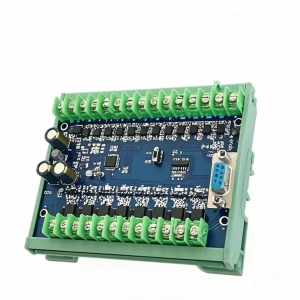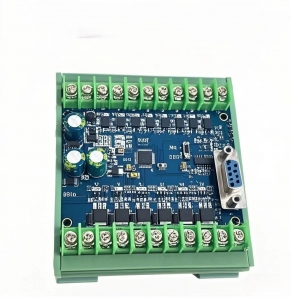Application and development trend analysis of embedded system
- 2020-07-18 11:35:00
- admin Original
- 1768
In the past few years, the whole embedded system market has made great progress. With the emergence of Internet of things and industrial Internet of things, embedded system technology has become the promoter of the rapid development of intelligent and interconnected Internet of things ecosystem. The broad, diverse and highly decentralized embedded system market includes software, development platform and hardware. Now more and more industries, products and services rely on embedded systems. The industrial market for embedded systems includes communications, automobiles, aerospace, consumer electronics, military systems, as well as industrial control and other industries, including smart cities.
Embedded system is usually a combination of fixed or programmable hardware and software. Embedded systems can be designed to support one or more specific functions in larger systems. Examples include industrial control systems and machines, automobiles, military systems such as avionics and weapons systems, medical devices, consumer products, smartphones, and building automation.
For simple, mass embedded devices facing the consumer market, the cost of embedded system may be 99% hardware and 1% software. However, for highly specialized, small batch embedded systems for aircraft, automobiles, or highly reliable industrial controls, the software may account for 95% of the cost of embedded systems if they include testing and meet the standards of complex applications. What's more, there is no clear boundary between embedded system and computer. Even today, there are still some debates about whether smart phones or intelligent IOT gateways are embedded systems or stand-alone computers. In the place where the traditional IOT gateway collects wireless sensor data and pushes it to the cloud, the new intelligent IOT gateway and edge devices can support LAN, Wan, embedded system market hardware components including chips, printed circuit boards, firmware, target devices, etc. Software elements include development platform, RTOS, test, etc. Of course, the devices and machines supported by these embedded systems in the whole market are much larger.
Embedded devices are usually powered by software integrated with hardware, including system on chip (SOC), field programmable gate array (FPGA), integrated circuit (IC) designed to be programmed by embedded developers for specific functions, and other firmware versions. This makes it difficult to completely separate software from hardware. Embedded system vendors in this market may include software only vendors, such as development and testing tools and real-time operating systems (RTOS). And products that also provide FPGA, SOC and other firmware products.
In general, embedded system is a very mature technology. With the development of new and more powerful processors, this technology can now support the next generation of intelligent devices, machines, devices and factories. Embedded systems represent the key supporting technologies for intelligent connected products, machines and systems, including the industrial Internet of things and supporting the digital transformation of the entire industry.
One of the main trends in the embedded field is the emergence of intelligent edge devices, which will help to make industrial production systems and processing plants Part of digital enterprises. Embedded intelligence in sensors and other metering devices will allow access, aggregation and analysis of data to support advanced analysis, making production systems and devices part of the industrial Internet of things ecosystem and digital twins. These are becoming key enabling technologies to help optimize the asset life cycle, especially in the operation and maintenance phases.
To capture business opportunities, cloud and edge infrastructure technology providers need to continue to scale to support billions of sensors and tens of thousands of intelligent systems. Edge devices must be connected and intelligent. Due to the huge demand for intelligence on the edge, the entire embedded system market will achieve significant growth. The continuous development of the Internet of things ecosystem and the steady development of industrial automation based on predictive and normative analysis to network physical system will eventually lead to autonomous and self-healing system. This will become the main industry driving force of embedded system growth.
Embedded system in the industry
For decades, embedded system has become the main technology of aerospace and national defense, automobile, medical equipment, communication and industrial automation industries. With the development of processor architecture and more computing power can be embedded in systems and devices, the intelligence and functions of these systems have multiplied. This makes products that traditionally use embedded systems become more intelligent and powerful, and makes products in other industries (consumer goods, household appliances, sporting goods, etc.) more intelligent and interconnected. Embedded system is becoming a part of almost everything in our life.
Automobile industry
At present, automotive applications represent the largest use of embedded systems, and may still be the largest part in the next few years. In the automobile, the embedded system is used for infotainment, safety, driver awareness, maintenance and the overall system control of the vehicle. The expansion requirements of vehicles with advanced navigation, driver assistance and vehicle to street communication only increase the demand for embedded systems. In addition, with the emergence of hybrid electric vehicles and electric vehicles, intelligent system control is also expanding.
In addition, the new fully automatic driving vehicle will require highly intelligent systems. It is much more complex than the embedded system in today's vehicles. The computing systems in these vehicles will need to run multiple complex AI software and systems for navigation, road and vehicle perception, traffic mode, pedestrian perception, risk
-
About
Founded in 2013,more than ten years of development history and technology precipitation,gathered numbers of senior engineers with rich experience in hardware and embedded software design. Advanced electronic circuit design,PCBA design,embedded system development,intelligent controller,wireless Bluetooth solution, IOT and other technical services.
-
Fast navigation
IOT Solutions Enterprise Announcement Smart Home Living Enterprise News Intelligent Toy Solution Original Project Energy Saving & Eco-friendly Industry information -
Contact
Tel.:(86)755-29653709
Fax:(86)755-29653709-803
E-mail:info@easy-core.com
Address:4/F, Bldg.B, Hongxinbao IZ.,
No.6 Feimei RD, Pingshan Dist., Shenzhen.




